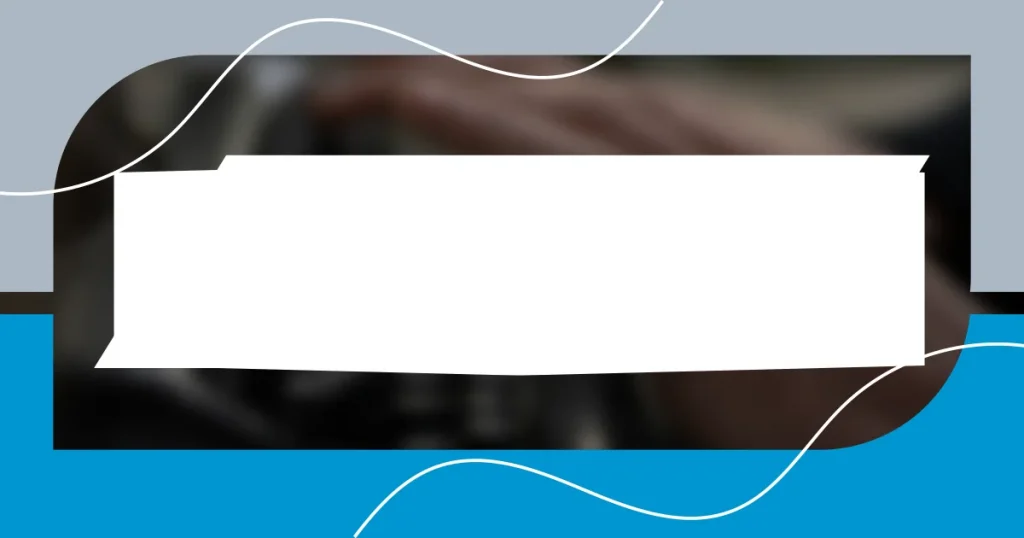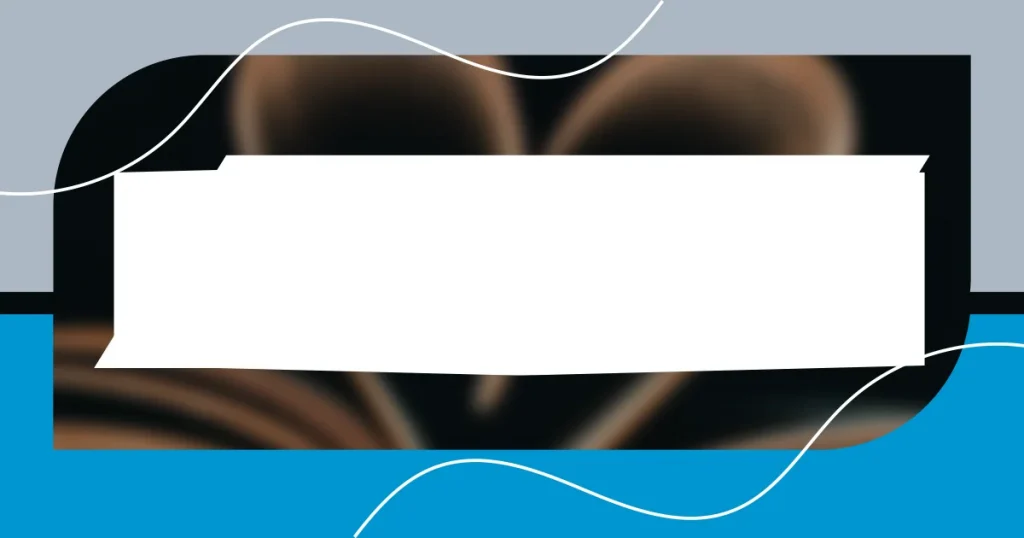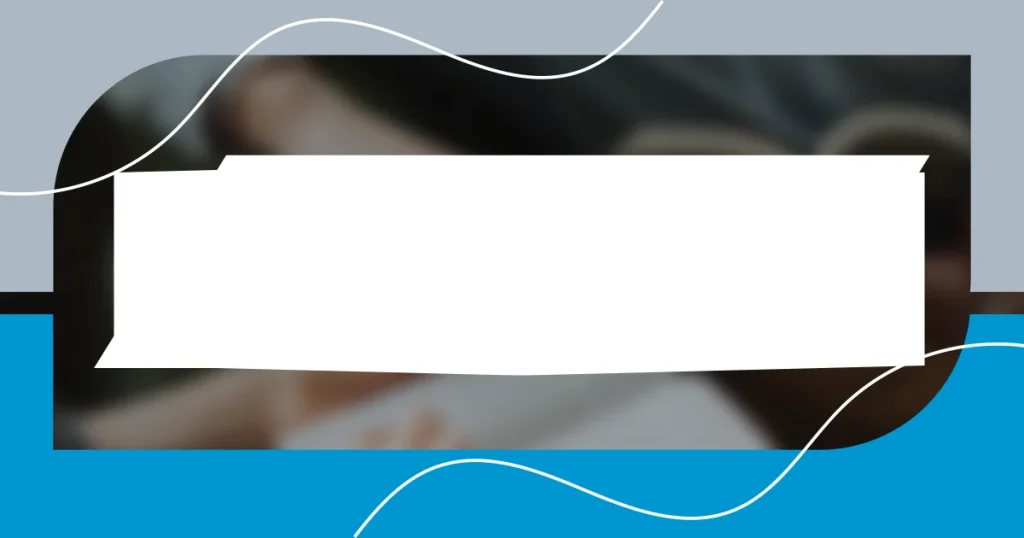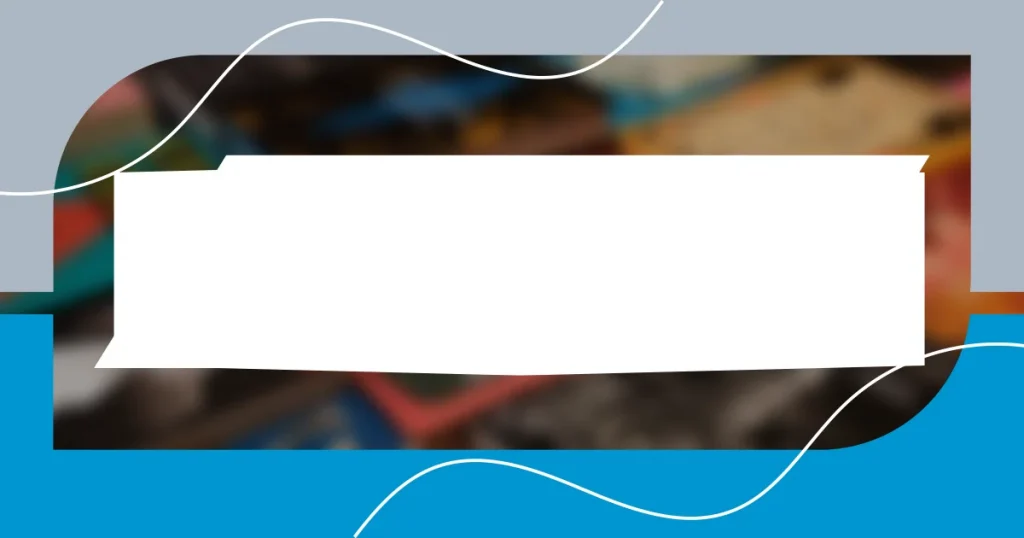Key takeaways:
- Storytelling combines structure and emotion, with personal experiences enriching narratives and creating deeper audience connections.
- Creative inspiration often stems from everyday moments, art, and collaboration with other storytellers, enhancing the richness of stories.
- Feedback and reflection are crucial for growth, allowing writers to identify weaknesses and deepen the authenticity of their narratives.
Understanding the storytelling process
At its core, the storytelling process involves both structure and emotion. I remember sitting around a campfire during my childhood, captivated by how my uncle could weave tales that made the shadows dance and flicker with life. Have you ever felt that thrill, as if the story was wrapping around you like a warm blanket?
The journey of storytelling isn’t just about the words we choose; it’s about the feelings those words evoke. I often reflect on my experience of crafting characters; each time I develop a backstory, it’s like breathing life into a part of myself. Can you relate to that moment when a character’s journey mirrors your own experiences?
Ultimately, understanding the storytelling process means recognizing that it’s a blend of imagination and authenticity. I’ve found that allowing my personal experiences to seep into the narrative helps create a deeper connection with the audience. Isn’t it fascinating how your own life can become the ink from which your stories flow?
Identifying personal influences
Identifying the influences that shape my storytelling is an incredibly personal journey. I think back to my high school English teacher, who introduced me to the world of classic literature. Her passion ignited a flame in me, showing me how words can weave intricate tapestries of life experiences. It was during those discussions about character development that I first understood how real-life struggles and triumphs can serve as a backdrop for compelling narratives.
Reflecting on my experiences, here are some key personal influences that have shaped my storytelling:
- Family Stories: Listening to relatives share their life events has always provided rich source material.
- Cultural Background: My heritage deeply informs my character arcs and settings, giving them authenticity.
- Travel Experiences: Exploring new places introduces me to diverse perspectives, enhancing the depth of my stories.
- Personal Challenges: Overcoming obstacles in my own life provides an emotional reservoir that enriches the complexity of my characters.
- Art and Music: The way a song can evoke a feeling or an artwork can tell a story often inspires the themes I explore.
Exploring creative inspiration sources
When I think about where my creative inspiration comes from, I often find it in the simplest moments of life. For instance, there are times when I’m taking a walk in the park, surrounded by the chatter of families and the rustle of leaves, and suddenly a scene unfolds in my mind. Has that ever happened to you? Those fleeting bits of everyday life have a way of planting stories in my heart and mind, transforming ordinary experiences into something extraordinary.
Art has also been a significant source of inspiration for me. I remember visiting an art gallery and being deeply moved by a painting that seemed to resonate with my own personal struggles. The colors, the emotion captured in brushstrokes—it was like the artist had put into visual form what I sometimes found hard to express in words. How often do we overlook the power of visual storytelling? Each piece of art invites us to probe deeper into our own emotions, influencing our narratives in unexpected ways.
Inspiration can also thrive in unlikely places. I often engage with fellow storytellers—in workshops or online forums. Their unique perspectives challenge my own and inspire fresh ideas. Just the other day, I was discussing plot twists with a fellow writer, and their take completely transformed how I approached my narrative. Have you found inspiration in collaboration, too? Sometimes, sharing ideas with others can be a catalyst for elevating your storytelling.
| Source of Inspiration | Personal Reflection |
|---|---|
| Everyday Moments | Simple experiences can trigger profound narratives. |
| Art | Visual pieces resonate emotionally and guide storytelling themes. |
| Collaboration | Engaging with other storytellers inspires fresh insights and ideas. |
Utilizing life experiences in stories
When I dive into my life experiences for storytelling, I’m often reminded of a particularly challenging time in my life—losing a close friend. The pain and confusion I felt became fertile ground for creating characters who grapple with grief. It’s fascinating how emotional turmoil can shape not just a plot, but the very essence of a character’s journey. Have you ever considered how your own struggles might give depth to your narratives?
I also cherish the little moments that seem mundane but carry so much weight, like Sunday family dinners. Observing my relatives engage in both laughter and quiet reflection has taught me the intricate dance of relationships. Each shared story, each hint of nostalgia, feeds my narrative well. In fact, I often ask myself: how can a simple gathering translate into a pivotal scene that encapsulates the essence of family dynamics?
Travel, too, feeds my storytelling. One of my most memorable trips was to a small village where the community invited me to participate in their annual festival. The vibrant colors, rich traditions, and the sheer joy of the locals sparked a tale that weaved their culture into my fictional world. How incredible is it that a single experience can inspire a whole new narrative? This is the magic of utilizing our life experiences; every moment, whether joyful or painful, holds the potential for connection and depth in our stories.
Incorporating cultural and societal elements
Incorporating cultural and societal elements into my storytelling often feels like a delicate dance. I distinctly remember attending a community festival in my hometown, where the vibrant colors and local traditions celebrated our heritage. The atmosphere was electric, and it sparked a realization for me: how vital it is to represent diverse cultures authentically. Have you ever felt moved to showcase your own background in your writing? It’s a beautiful way to honor one’s roots while crafting relatable narratives.
One project I worked on revolved around the theme of immigration, inspired by my grandmother’s journey. Her stories of resilience shaped the characters I created, infusing them with depth and authenticity. The emotions she expressed—the fear, hope, and determination—became the heartbeat of my narrative. How can our family histories inform the worlds we build in our stories? I firmly believe that personal connections to broader societal themes enrich the layers of our storytelling.
I often look to current societal issues as a source of inspiration, too. For example, while exploring the theme of social justice in my recent work, I interviewed individuals from various backgrounds. Their insights deeply affected my understanding of empathy and challenge. Isn’t it fascinating how engaging with real-life experiences can illuminate the struggles we face as a society? Incorporating these elements not only makes a story relevant but also creates an opportunity for dialogue and understanding among readers.
Techniques for enhancing storytelling
When enhancing storytelling, I find that vivid imagery plays a crucial role in drawing readers closer. I remember crafting a scene where a thunderous storm raged outside, reflecting the inner turmoil of my protagonist. I used descriptive language to evoke the sound of rain tapping against the window and the flickering shadows cast by lightning. Have you ever noticed how a well-painted picture can make moments feel palpable? It’s amazing how these sensory details can transform a simple narrative into an immersive experience.
Dialogue is another powerful tool in my storytelling arsenal. Reflecting on a recent character exchange I wrote, it was a heated argument between two friends that revealed their deepest fears and desires. Constructing an authentic back-and-forth not only propelled the plot but also allowed readers to connect emotionally with the characters. Do you think your characters’ voices are coming through clearly? Engaging dialogue breathes life into stories, making them relatable and authentic.
Lastly, I often play with pacing to heighten tension or evoke calm. There was a time when I wrote a chase scene, and by alternating short, punchy sentences with longer, flowing descriptions, I created a rhythm that mirrored the action’s intensity. This technique really wrapped the reader in the adrenaline of the moment. How do you manage pacing in your writing? Being aware of how the tempo impacts storytelling allows me to control the emotional landscape of my narratives effectively.
Reflecting on feedback and growth
Reflecting on feedback is an integral part of my storytelling growth. I vividly recall receiving critiques from a close friend on a draft I was particularly proud of. The comments made me uneasy at first—who likes to hear their work isn’t perfect? But as I sat with those thoughts, I realized that the feedback pointed out gaps in character development that I hadn’t noticed. It sparked a journey of reworking those elements, ultimately enriching the narrative and deepening my understanding of what resonates with readers. Have you ever felt that pushback transform your writing?
Each piece of feedback opens a door to self-discovery. I remember a time when a mentor challenged me to explore a character’s vulnerability more explicitly. At first, it felt uncomfortable; I feared exposing that side meant risking strength. But when I embraced the advice, the narrative became so much more compelling. It was like peeling back layers of my own experience to find universal truths. Isn’t it remarkable how the act of revising brings clarity not just to our stories, but also to our intentions as storytellers?
Growth isn’t always linear, and that’s something I’ve come to embrace. I find that reflecting on past projects helps me identify patterns in my writing—both strengths and weaknesses. For example, I’ve noticed I often shy away from endings that feel too hopeful. After receiving feedback on this tendency, I’ve begun to ask myself—why? Delving into this question has led to more nuanced conclusions that resonate deeply with readers. How do you incorporate reflection into your creative process? It turns out, confronting our habits can unlock a more authentic voice in our storytelling.











